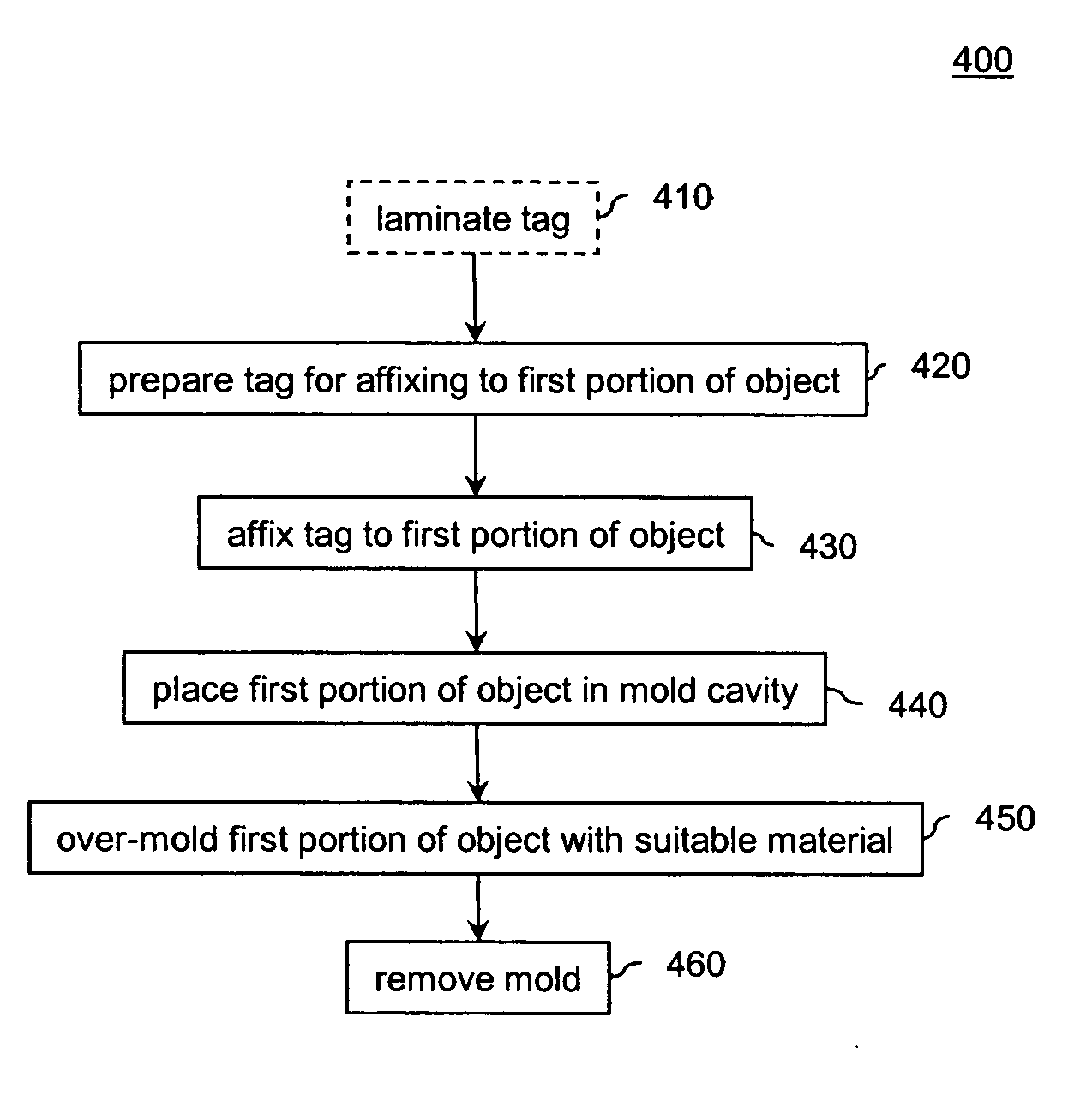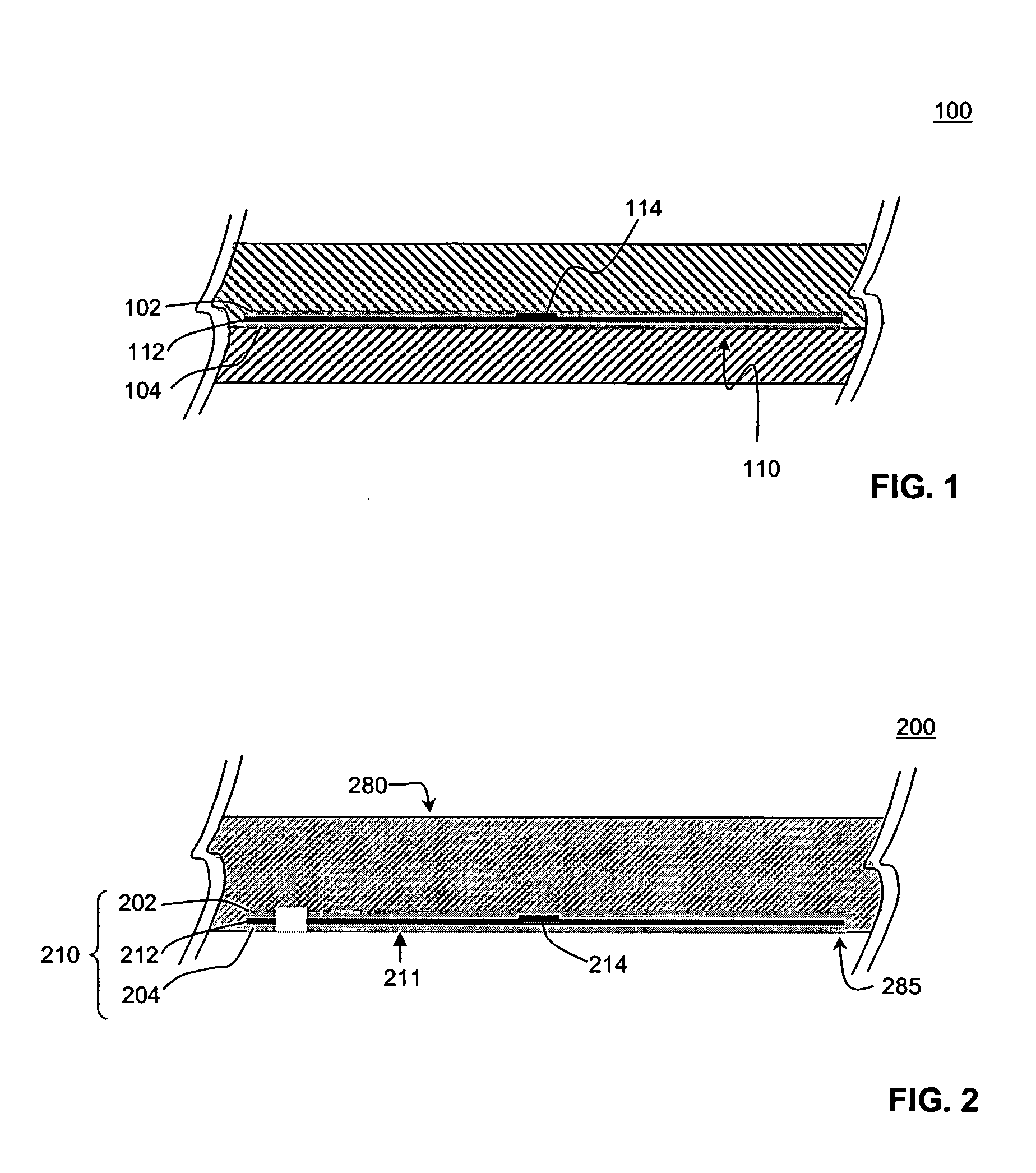Radio frequency identification (RFID) solution to lost time spent on instrument inventory
a technology of instrument inventory and frequency identification, applied in the field of radio frequency identification (rfid) tags, can solve the problems of increasing hospital and medical facilities costs, increasing patient risk, and wasting patient time,
- Summary
- Abstract
- Description
- Claims
- Application Information
AI Technical Summary
Benefits of technology
Problems solved by technology
Method used
Image
Examples
Embodiment Construction
1.0 Introduction
[0022] Radio frequency identification (RFID) tags are electronic devices that may be affixed to items whose presence is to be detected and / or monitored. The presence of an RFID tag, and therefore the presence of the item to which the tag is affixed, may be checked and monitored by devices known as “readers.” Readers typically transmit radio frequency signals to which the tags respond. Each tag can store a unique identification number. The tags respond to the reader transmitted read signals by providing their identification number so that they can be identified.
[0023]FIG. 10 illustrates an environment 1000 where one or more RFID tag readers 104 communicate with an exemplary population of RFID tags, according to the present invention. As shown in FIG. 10, the population of tags 1022 includes seven tags 1020a-1020g. According to embodiments of the present invention, a population of tags 1022 may include any number of tags 1020.
[0024] Exemplary environment 1000 also i...
PUM
| Property | Measurement | Unit |
|---|---|---|
| temperature | aaaaa | aaaaa |
| time | aaaaa | aaaaa |
| speed | aaaaa | aaaaa |
Abstract
Description
Claims
Application Information
 Login to View More
Login to View More - R&D
- Intellectual Property
- Life Sciences
- Materials
- Tech Scout
- Unparalleled Data Quality
- Higher Quality Content
- 60% Fewer Hallucinations
Browse by: Latest US Patents, China's latest patents, Technical Efficacy Thesaurus, Application Domain, Technology Topic, Popular Technical Reports.
© 2025 PatSnap. All rights reserved.Legal|Privacy policy|Modern Slavery Act Transparency Statement|Sitemap|About US| Contact US: help@patsnap.com



